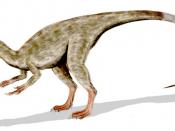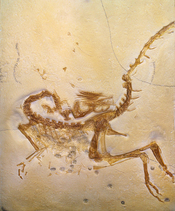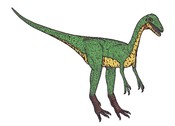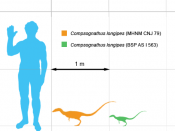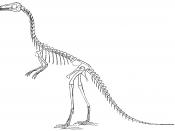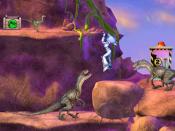Compsognathus (komp-SOG-na-thus) Pronunciation: komp-SOG-na-thus Translation: Elegant Jaw Also Known As: Description: Carnivore, Bipedal Order: Saurischia Suborder: Theropoda Infraorder Tetanurae Micro-order Carnosauria (not confirmed) Family: Compsognathidae Height: 24 inches (0.6 meters) Length: 40 inches (1.0 meters) Weight: 8 lbs (3.6 kg) Period: Late JurassicCompsognathus was once the smallest known dinosaur -- about the size of a chicken. Because of its size and the lightness of its bones, it is believed that Compsognathus was a very swift predator. It has been suggested that Compsognathus was feathered, but as it was discovered in the same lithographic limestone in which Archaeopteryx was found and yet showed no feather impressions, a feathered Compsognathus is unlikely.
The Compsognathus ate mostly small animals such as moles, rats, and other small Animals. Compsognathus was the fourth smallest dinosaur. Compsognathus was 24 in (0.6 meters) 40 in (1.0 meters). Compsognathus weighed around 8 Ibs (3.6 kg). The Compsognathus period was around late Jurassic.
Compsognathus belonged to a group of fleet-footed theropod dinosaurs called coelurosaurs. It was a lightly built biped with an unusually long, slender tail used to balance and steer the animal when running. It had some hollow bones, like those of birds, and its delicate jaws contained many sharp, backwardly curved teeth. The forelimbs were half as long as the legs, which had long, slender, birdlike feet. The animal was carnivorous; within the German skeleton are remains of a smaller reptile, apparently remnants of a last meal.
Remarkably birdlike in many features, Compsognathus may have possessed feathers and may have been close to the actually ancestry of birds.
